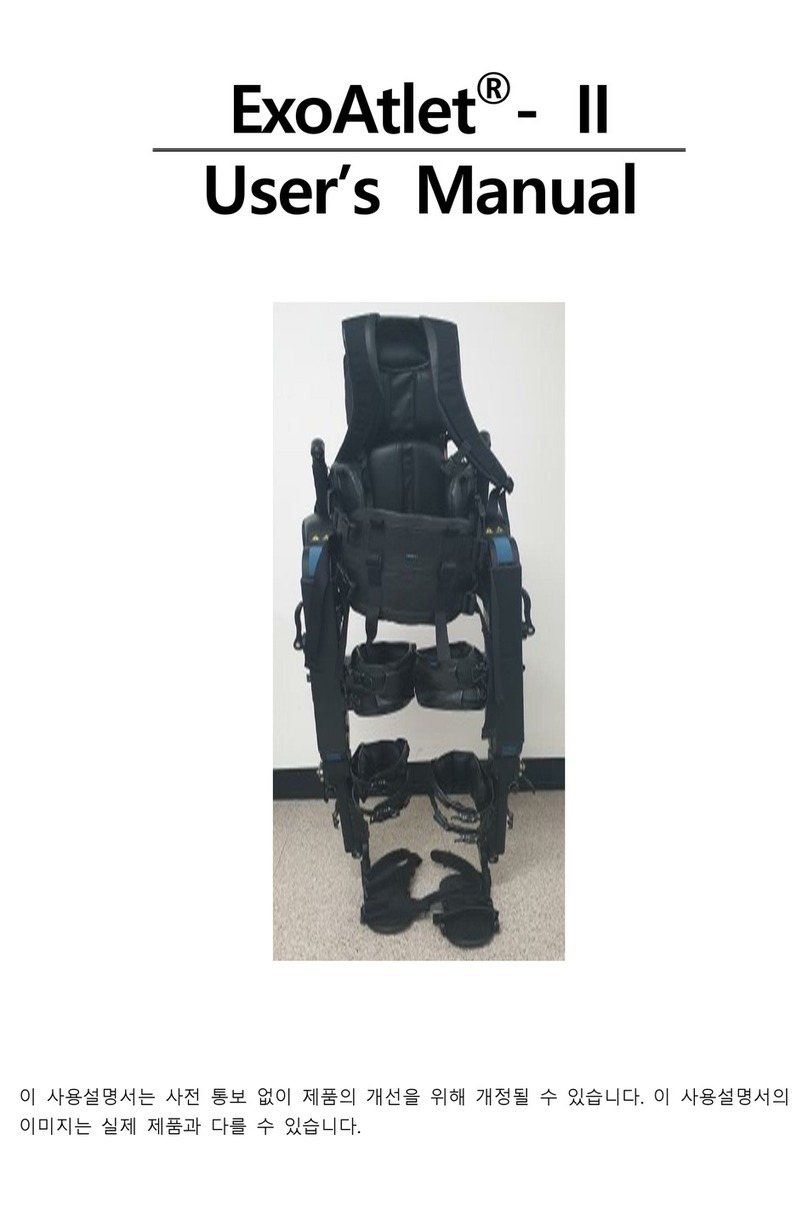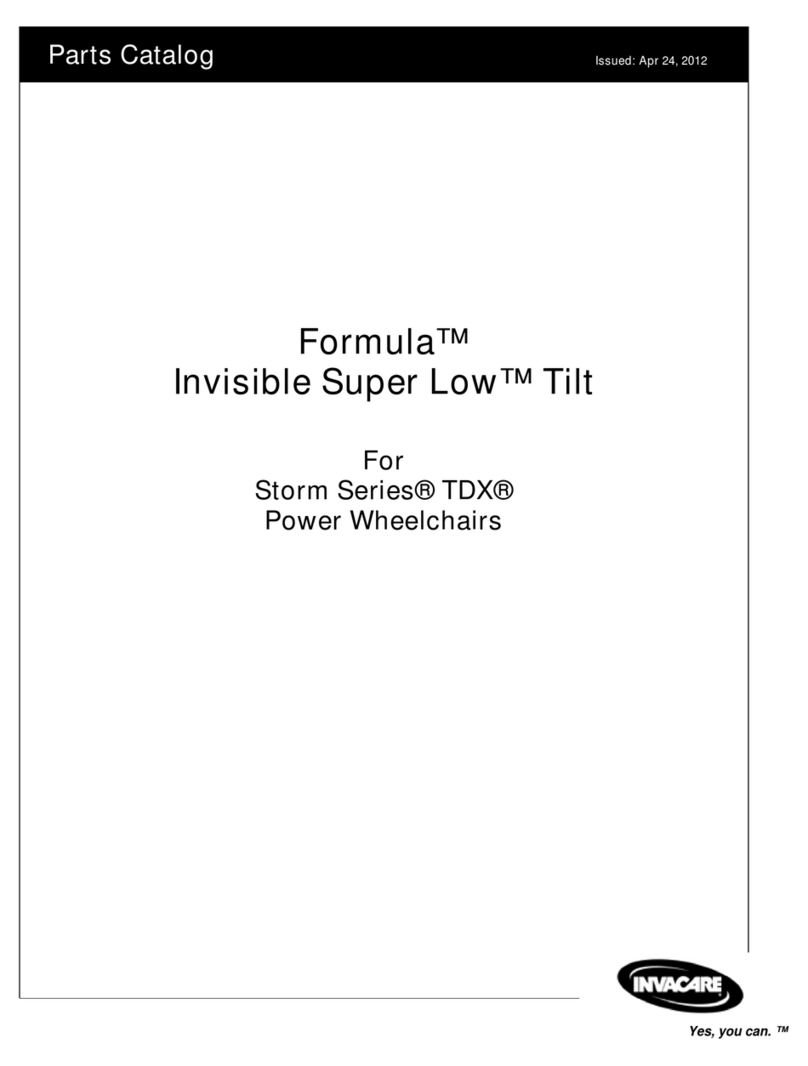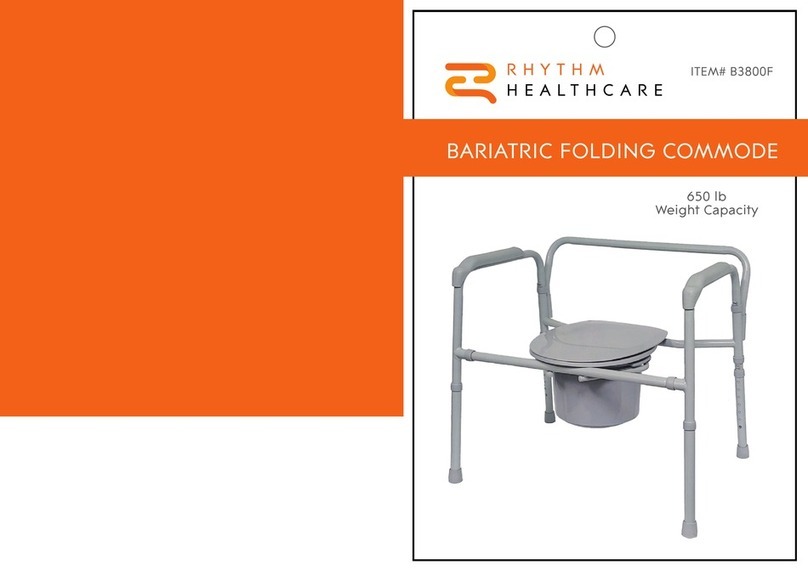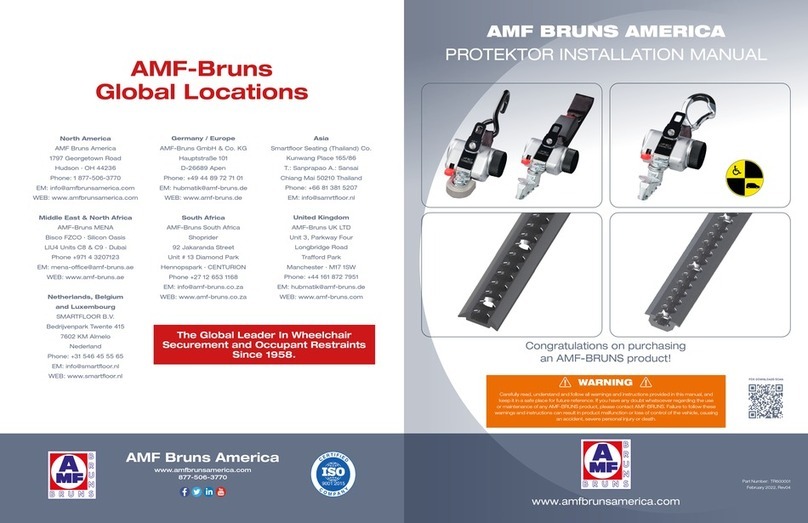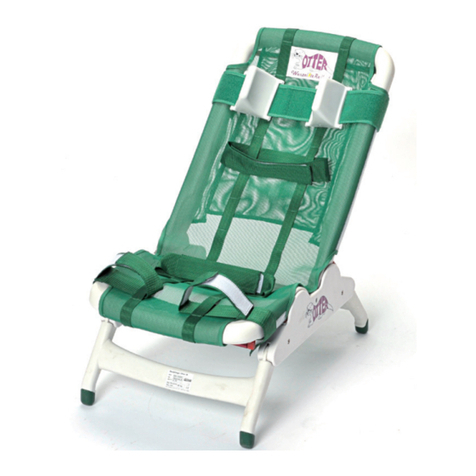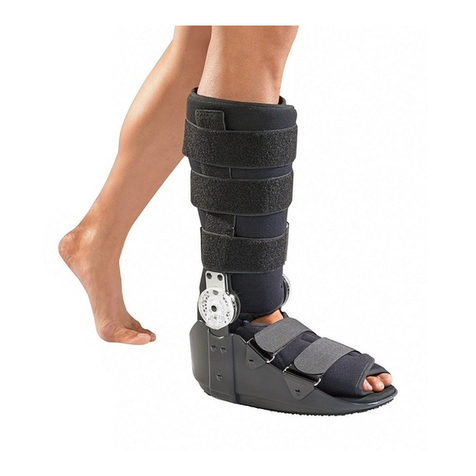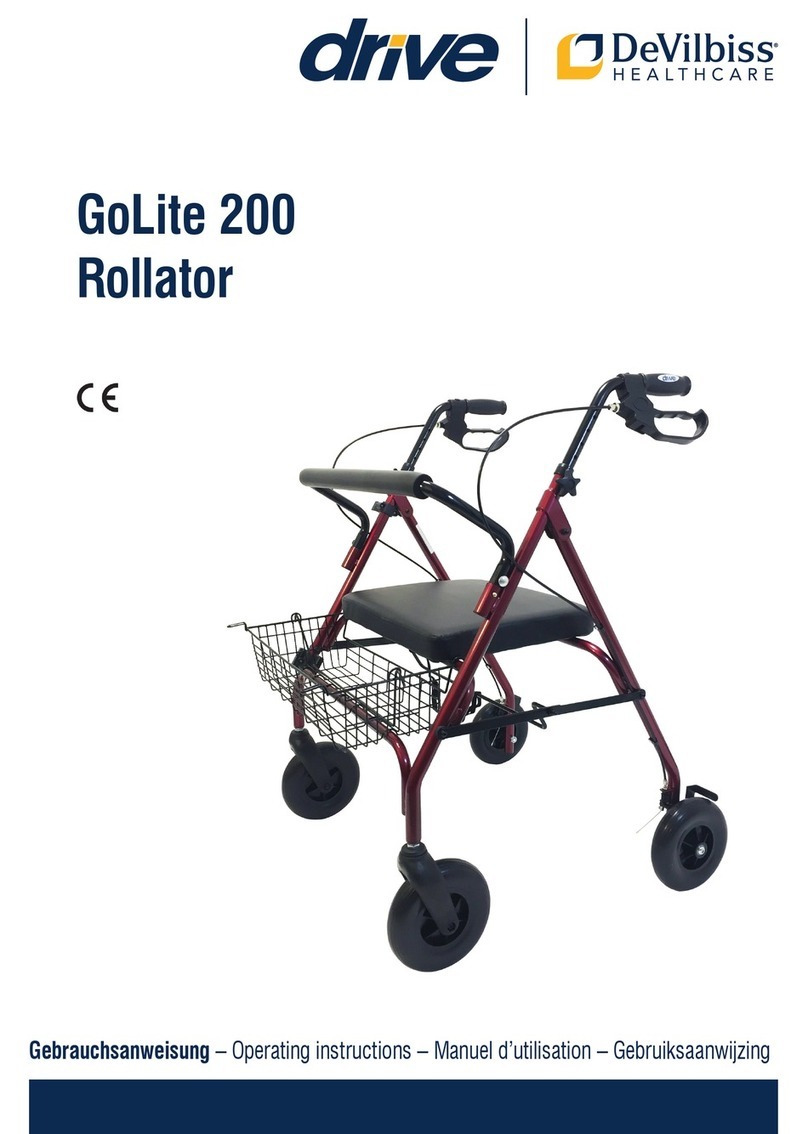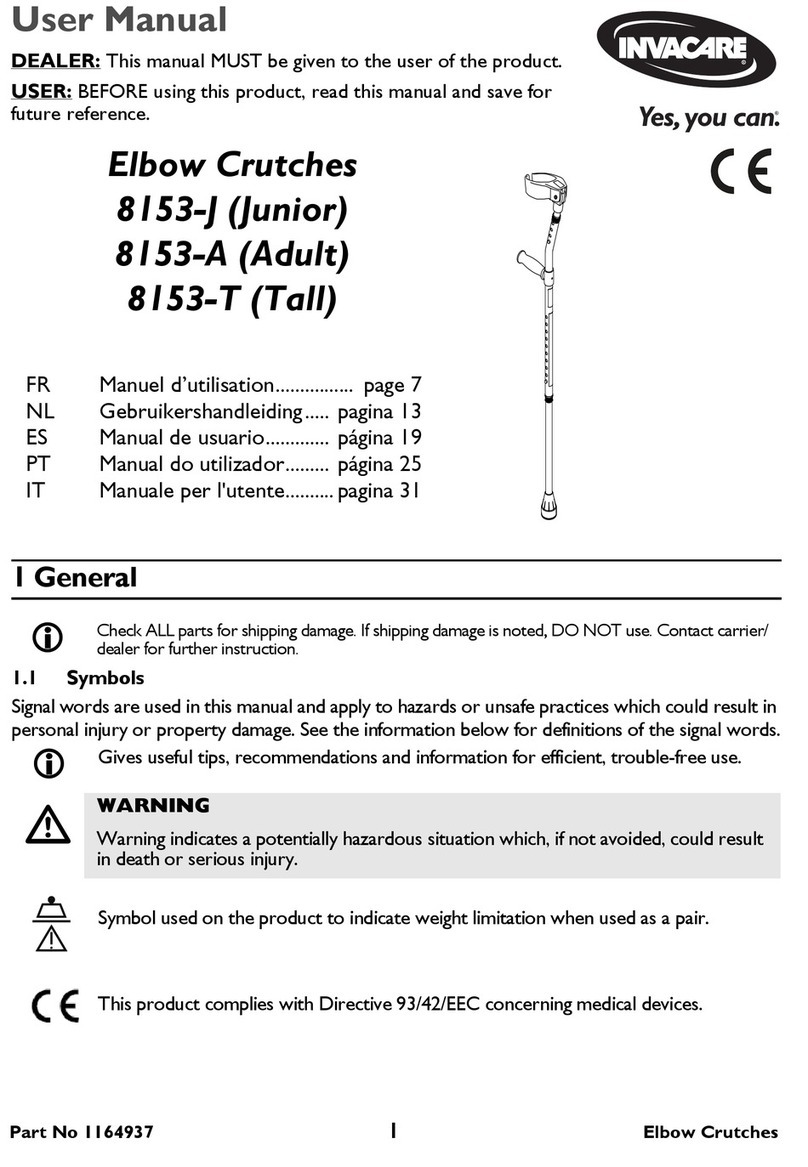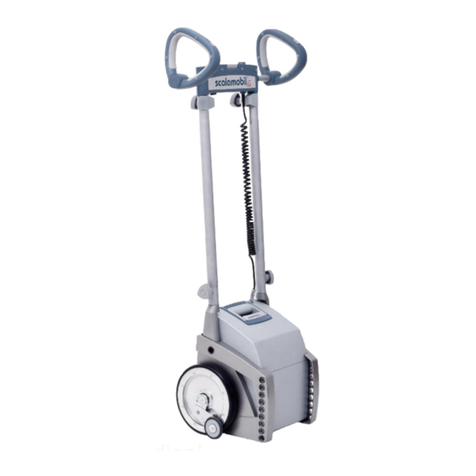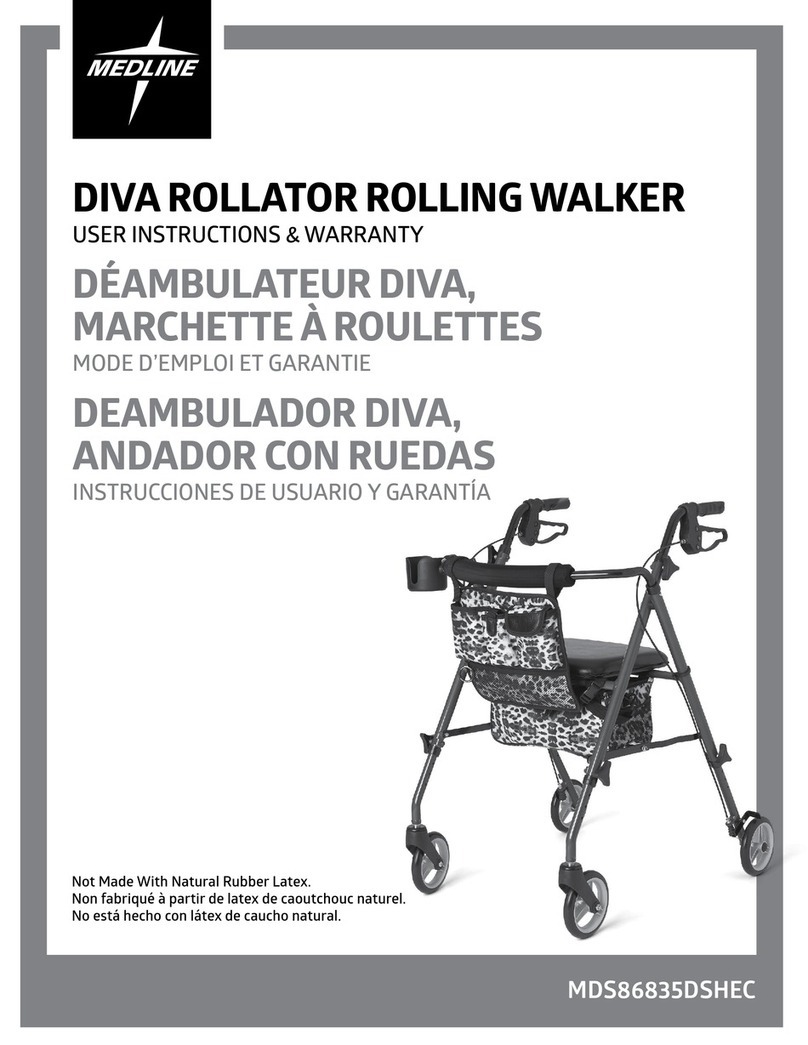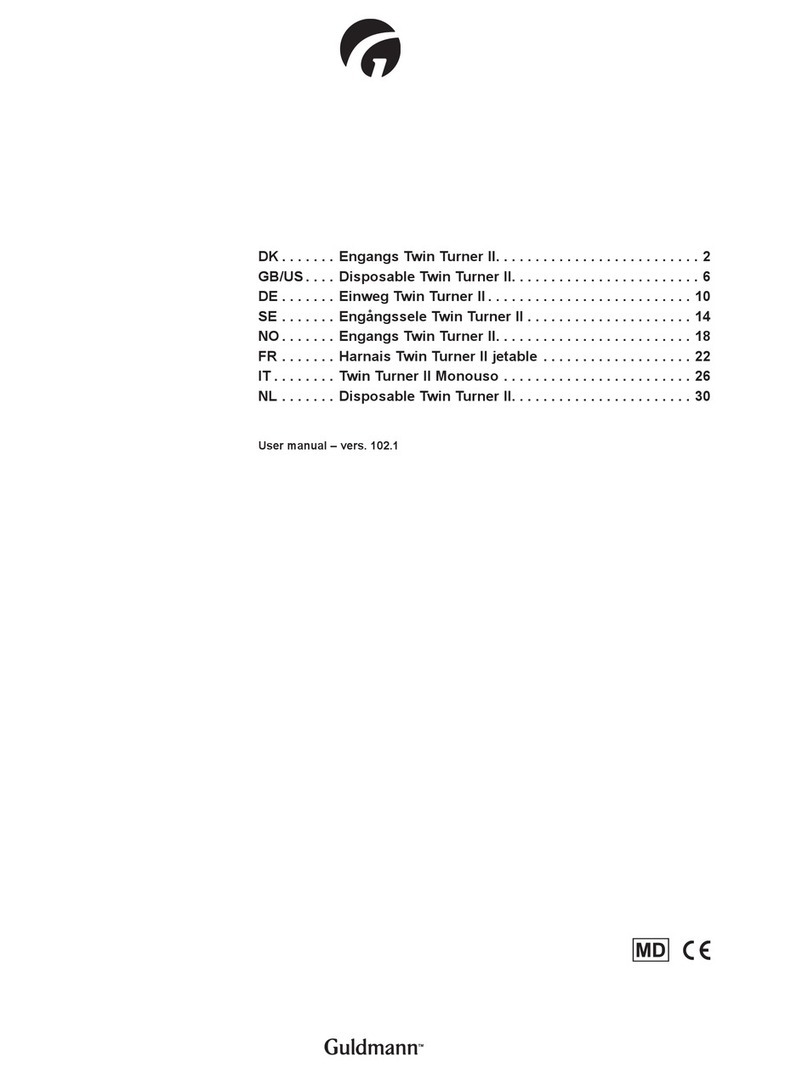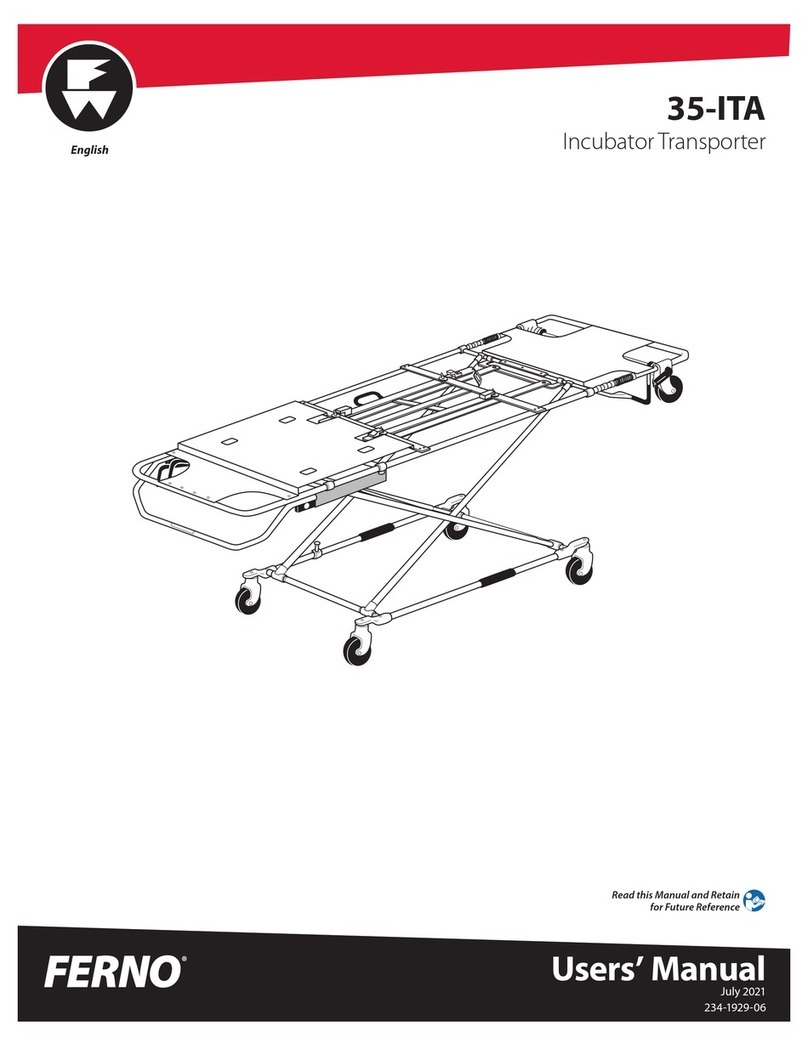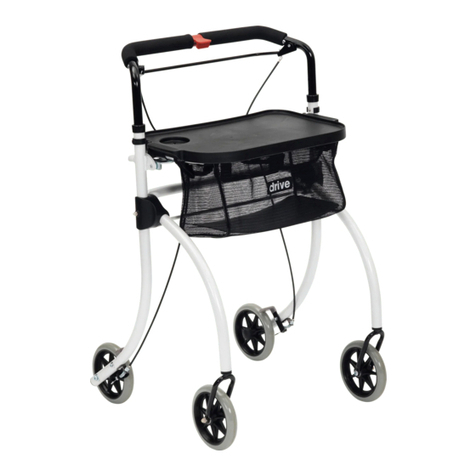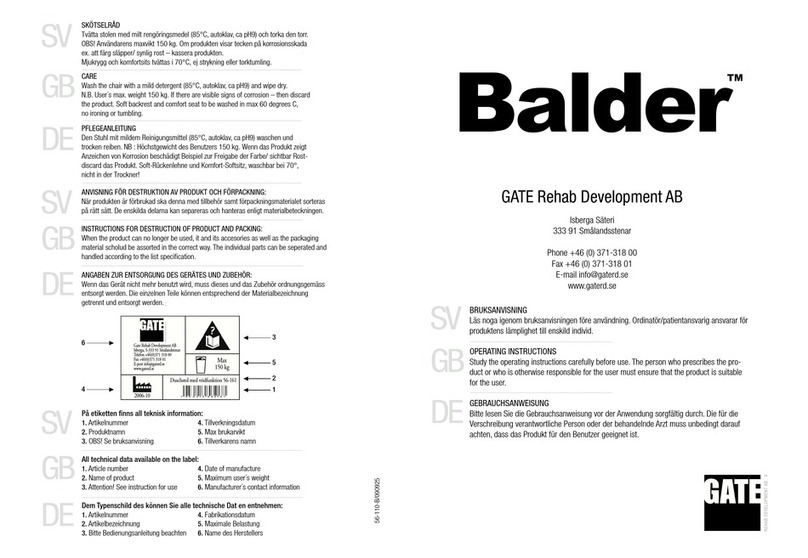
Deutsch
• Neues anatomisches Design, passt sich optimal dem Kniegelenk an
• Innovativer Rahmen aus Aluminium-Speziallegierung, leicht und stabil, einfach
verformbar durch den Techniker verformbar (für eine erleichterte Modellierung
an Oberschenkel und Wade), mattschwarz hartlackiert
• Neue Gurtführungen aus speziellem, biegbarem Polymer mit Anti-Rotationssystem
erleichtern das Anlegen und passen sich an das Bein an, einzeln abnehmbar
• Neue zweigeteilte Verschlussbänder mit Klettband für einfaches und
optimales Anlegen. Bei Bedarf einzeln entfernbar
• Polsterung der Gurte aus MTP-Schaumstoff und Velour-Überzug, nahtfrei
und ohne Klebestellen für angenehmes Tragen direkt auf der Haut
• Nur PP3: Sehr flaches polyzentrisches Gelenk, einfach variabel mit Keilen einstellbar.
Extension: 0°, 10°, 20°, 30°, 40°. Flexion: 45°, 60°, 75°, 90°,
Ruhigstellung: 0°, 10°, 20°, 30°
• Nur PP4: Neues polyzentrisches KLICKKLACK Gelenk, superflach und leicht von mit Keilen
verstellbar, OHNE Werkzeuge: Extension: 0°, 10°, 20°, 30°, 40°; Flexion: 45°, 60°, 75°, 90°;
Blockierung: 0°, 10°, 20°, 30°
• Ein mediales, anatomisch vorgeformtes Kondylenpolster, vormontiert, für
höchsten Tragekomfort sowie optimale Fixierung
• Zwei unterschiedlich starke und leicht austauschbare Kondylenpolster-Sets
zur einfachen Anpassung (z. B. nach Rückgang der Schwellung im Kniegelenk)
• Rahmeninnenpolster fixiert mit flachen, verschweißten Druckknöpfen für
sichere Positionierung. Abnehmbar, z. B. für die Reinigung. Rutschhemmender
und hautfreundlicher Überzug aus Multi-Grip-Gewebe
INDIKATIONEN
• Instabilitäten und Rupturen des LCA, LCP, LCM, LCL
oder kombinierte Bandinstabilitäten
• Komplexe Knieinstabilitäten, traumatisch oder degenerativ
• Prä/Postoperative Behandlung, rehabilitativ oder konservativ,
der genannten Verletzungen
KONTRAINDIKATIONEN
Zur Zeit keine bekannt
EIGENSCHAFTEN

